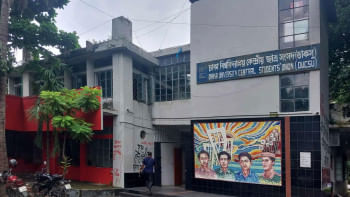Debt burden on the poorest getting heavier

The debt burden of the poorest section of the population is rising due to high food prices and the overall cost of living, according to a study by the Power and Participation Research Centre (PPRC).
The study found that the poorest 40 percent of the population reported a 7 percent net increase in debt over the previous six months, the research organisation said while releasing the report at the LGED auditorium in Dhaka yesterday.
The most marginalised are being pushed into deeper economic stress, said PPRC Executive Chairman Hossain Zillur Rahman.
Based on data from more than 8,000 households across the country, the survey found that people used nearly one-third of their debt for household consumption. This was followed by medical expenses and house construction or repairs, with some 11 percent of loans spent on healthcare.
Farming and small business investments also accounted for a notable portion, highlighting the reliance of many households on credit to maintain livelihoods.
Rahman said there are five new vulnerabilities that require urgent attention. These are debt burden, poverty in female-headed families, food insecurity, chronic illness, and the use of non-sanitary latrines.
The most marginalised are being pushed into deeper economic stress, said PPRC Executive Chairman Hossain Zillur Rahman
The economist said the rising debt among the poorest households is a stark reminder that poverty is not only about low income but also financial vulnerability.
In this situation, Rahman said the interim government is focusing on macroeconomic indicators, which is not enough.
"We need to focus on people's well-being, on ground realities, on equitable allocation. Discussions should not remain limited to GDP alone; instead, greater focus must be given to equality, justice, inclusiveness, and the welfare of citizens," he said.
The survey found that average household debt in mid-2025 was Tk 189,033, which is 45 percent higher than average household savings of Tk 130,728. This imbalance is more severe among low-income groups.
The debt load of the poorest 10 percent of households was Tk 62,767, more than three times higher than their savings of Tk 19,737.
By contrast, the richest 10 percent of households could save from their income after meeting basic needs, maintaining average savings of Tk 716,265, higher than average debts of Tk 643,083.
PPRC said its findings underline a worrying dependence on debt to finance essentials. For many poor and vulnerable families, borrowing is not a pathway to asset creation but a lifeline for food, healthcare, and daily survival.
This pressure is compounded by rising medical costs, especially as more than half of households reported at least one chronically ill member, pushing families deeper into the cycle of borrowing.
Unless household-level vulnerabilities are directly addressed, the growing gap between savings and debt could further entrench poverty, it said.
Targeted financial assistance, affordable healthcare, and debt-relief mechanisms may be needed to prevent the debt trap from becoming a structural feature of Bangladesh's economy, PPRC added.

 For all latest news, follow The Daily Star's Google News channel.
For all latest news, follow The Daily Star's Google News channel. 



Comments